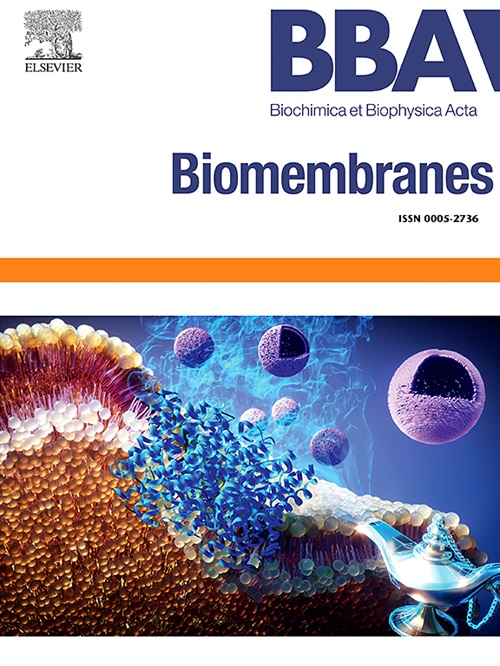Elucidating the interactions of endocannabinoid-like neurotransmitters, N-acyltaurines and bovine serum albumin: Spectroscopic and computational approaches
IF 2.5
3区 生物学
Q3 BIOCHEMISTRY & MOLECULAR BIOLOGY
引用次数: 0
Abstract
N-Acyltaurines (NATs) are endogenous neurotransmitters, structurally similar to endocannabinoids, and have anti-inflammatory and anti-proliferative effects. In response to NATs, TRP channels, TRPV1, TRPV4 and the peptide hormone, GLP-1 are activated. Serum albumin proteins act as transporters for a variety of substances in blood plasma (i.e., hormones, fatty acids, bilirubin, ions, and medications). Due to the structural closeness of Bovine Serum Albumin (BSA) and Human Serum Albumin (HSA), a study into NAT-BSA interactions is crucial. To study interactions of NATs (n = 10–18) with BSA, spectroscopic and computational techniques were used. From the steady-state fluorescence measurements, observed binding constants are in the range of 1.57 × 105 M−1 to 2.85 × 105 M−1. Due to the binding of NATs, the fluorescence of BSA is quenched (∼24.77 %). The negative enthalpy and entropy change and Gibbs free energy values, obtained from van't Hoff plot indicate that the interactions between NATs and BSA are spontaneous and primarily driven by hydrogen bonding. Competitive site-binding assays with warfarin and ibuprofen show that NATs bind to both the drug-binding sites in BSA concurrently. The CD spectroscopic and FT-IR analysis indicates relatively marginal changes in the secondary structure of BSA. Molecular docking analyses are done to identify binding locations and molecular-level interactions. The negative free energy values indicate that NATs have a positive binding relationship with BSA. These findings are congruent with the findings of site-binding studies, which reveal that NATs have a higher proclivity for interacting with sites I and II at the same time.

阐明内源性大麻素样神经递质、n -酰基牛磺酸和牛血清白蛋白的相互作用:光谱和计算方法
n -酰基牛磺酸(NATs)是内源性神经递质,结构类似内源性大麻素,具有抗炎和抗增殖作用。在NATs的作用下,TRP通道、TRPV1、TRPV4和肽激素GLP-1被激活。血清白蛋白作为血浆中多种物质(如激素、脂肪酸、胆红素、离子和药物)的转运体。由于牛血清白蛋白(BSA)和人血清白蛋白(HSA)在结构上的紧密性,研究它们之间的相互作用是至关重要的。为了研究NATs (n = 10-18)与BSA的相互作用,使用了光谱和计算技术。从稳态荧光测量中,观察到的结合常数在1.57 × 105 M−1至2.85 × 105 M−1之间。由于NATs的结合,BSA的荧光被猝灭(~ 24.77%)。由van't Hoff图得到的负焓变、负熵变和Gibbs自由能值表明NATs与BSA之间的相互作用是自发的,主要由氢键驱动。与华法林和布洛芬的竞争性位点结合试验表明,NATs同时结合BSA中的两个药物结合位点。CD光谱和FT-IR分析表明,BSA的二级结构变化相对较小。分子对接分析用于确定结合位置和分子水平的相互作用。负自由能值表明NATs与BSA有正结合关系。这些发现与位点结合研究的结果一致,表明NATs同时与位点I和II相互作用的倾向更高。
本文章由计算机程序翻译,如有差异,请以英文原文为准。
求助全文
约1分钟内获得全文
求助全文
来源期刊

Biochimica et biophysica acta. Biomembranes
生物-生化与分子生物学
CiteScore
8.20
自引率
5.90%
发文量
175
审稿时长
2.3 months
期刊介绍:
BBA Biomembranes has its main focus on membrane structure, function and biomolecular organization, membrane proteins, receptors, channels and anchors, fluidity and composition, model membranes and liposomes, membrane surface studies and ligand interactions, transport studies, and membrane dynamics.
 求助内容:
求助内容: 应助结果提醒方式:
应助结果提醒方式:


